Buzzing with Excitement !!!!
Clusters On Wednesday, we had our first Cooper Clusters lunch of the year. These...

Clusters On Wednesday, we had our first Cooper Clusters lunch of the year. These...
Step into a world of wonder and discovery in our Kindergarten program.
The Kindergarten math curriculum employs Illustrative Math, offering students an optimal foundation for developing essential mathematical skills. Emphasizing numbers as the core focus, students begin by using manipulatives to represent and compare numbers before progressing to drawing and more abstract concepts. The curriculum ensures that students grasp fundamental concepts of addition and subtraction, while also fostering their ability to describe shapes and understand spatial relationships.
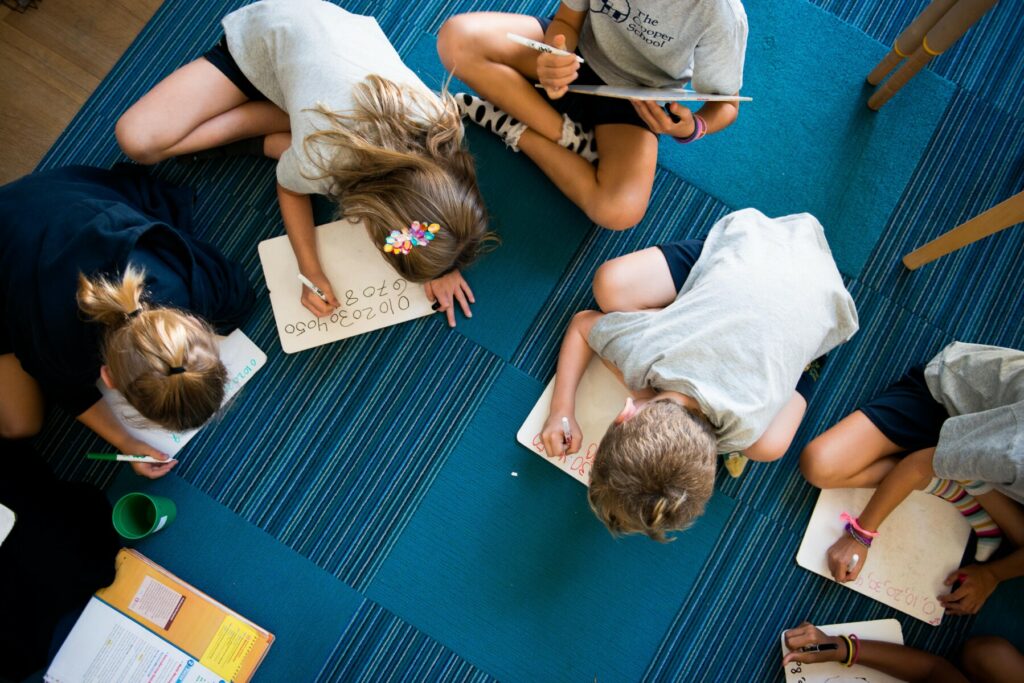
The Kindergarten reading curriculum aims to introduce students to reading in a joyful and exciting way. Class read alouds invite students into the world of stories, both picture books and chapter books, building community as they get to know and love characters together and become familiar with story structures. Students are em-powered to observe, interpret, and read the world around them, fostering an understanding that reading happens both within and outside of books. Students get excited about reading and apply their prereading skills as well as making predictions and connections across books.
Through reading workshop, students are taught a whole group mini lesson that is followed by student independent work, partner reading, small groups, or one on one reading with a teacher. Kindergarten students explore a wide range of genres, through units of fiction, nonfiction, poetry, and author studies.Students are taught to apply their phonics skills to the decoding of words using “just right” books for each individual and to celebrate their tremendous growth as readers!
The Kindergarten writing curriculum begins with students using drawings and labels to express their ideas and stories. Using the workshop model, students are explicitly taught a skill and then move to independently apply it in their own writing about topics that are true and important to them. Throughout the year, students participate in units covering personal narratives, all about books, poetry, and persuasive writing. As kindergartners grow their understanding of phonics and spelling, they are able to increase their writing from labels, to words, to sentences, and whole books!
Kindergarten phonics uses explicit instruction to teach students the foundational skills necessary to become proficient readers. Students systematically learn each skill needed and learn to apply it with automaticity and confidence. Students review previously taught skills as they are introduced to new skills, building and practicing through explicit lessons and independent work. They have opportunities to apply these concepts through reading and writing activities.
Kindergarten vocabulary instruction is taught explicitly through whole class read alouds, group discussions, and explicit instruction. Through the enjoyment of literature, students are exposed to a wide variety of words. Vocabulary words are specifically chosen based on the frequency of the word to appear in stories as well as its importance for understanding the text. Teachers help present the words in a child-friendly context, using examples, comparisons, and real world scenarios. Students are encouraged to understand the meaning of the word, draw pictures to represent it, and attempt to use the words in their own writing.
The Kindergarten handwriting curriculum helps guide students to properly hold their pencil, orient their paper correctly, and scaffolds the process of forming each letter correctly. Students are explicitly taught how to form each letter and are provided many opportunities to practice and participate in activities that
make handwriting mastery fun.
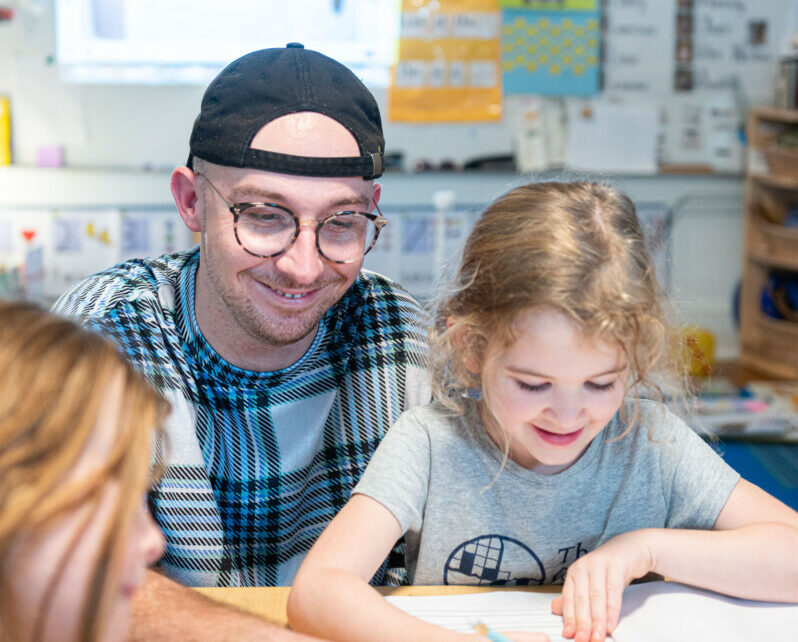
The Kindergarten science curriculum incorporates many programs that give students access to hands-on lessons, guiding them through problem solving and the scientific process. Kindergarten scientists learn about the needs of plants and animals as well as life cycles through the lens of monarch butterflies and pumpkins. They investigate a variety of earth’s materials and observe and compare their different properties. Students explore light and sound and how to incorporate that knowledge into a puppet show. They learn about the warming effects of the sun, apply their understanding of light and shadow, and use their engineering skills to design shelters.
The Kindergarten social studies curriculum centers on cultivating students’ understanding of their role in the world and nurturing empathy for others. Commencing with an engaging identity unit, students explore diverse homes, families, and cultures to foster perspective and a sense of belonging. Through interactive lessons students also learn about the purpose of clothing, its cultural diversity, and how it reflects the traditions and climates of different regions. The curriculum also delves into the global exploration of puppets, examining their cultural variations and historical significance in storytelling across different societies. This approach broadens students’ awareness and appreciation for cultural diversity, encouraging a more inclusive worldview.
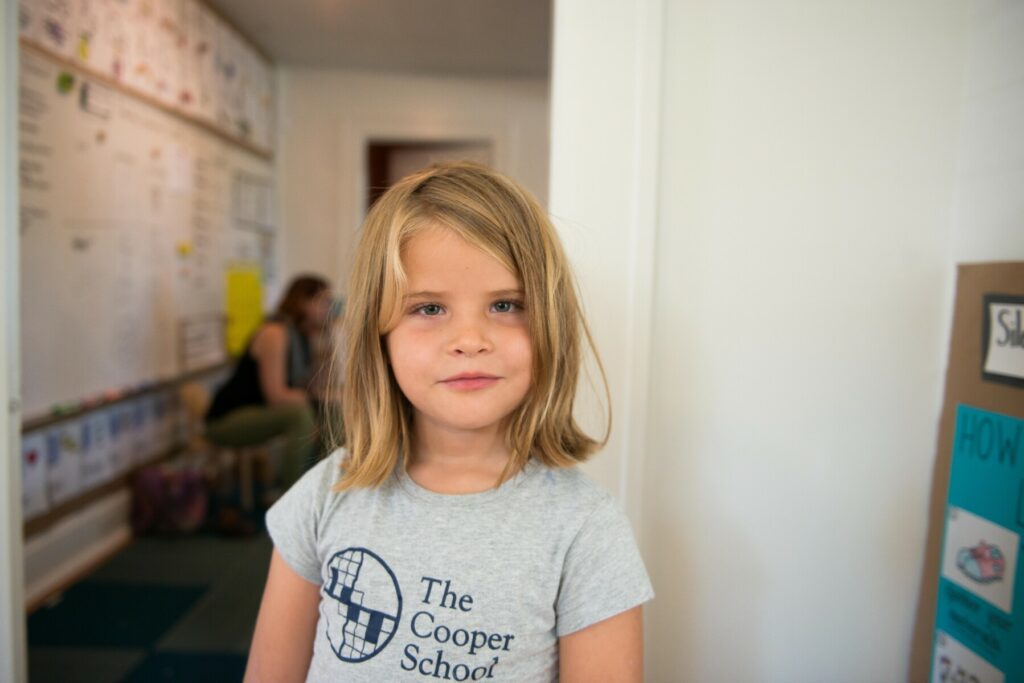
This study commences with a visit to a pumpkin patch, providing students with hands-on experience in understanding the origins and growth requirements of pumpkins from seed to maturity. Through the course, students gain insights into the intricate life cycle of pumpkins, their anatomical features, functional purposes, and the process of decomposition. The emphasis is on empowering students to apply their newfound knowledge to make informed predictions related to various aspects of pumpkins.
In this captivating project, Kindergarteners seamlessly integrate their exploration of clothing with a fascinating study of diverse biomes. Commencing the clothing unit with a thoughtful discussion on the various purposes of attire, students delve into an examination of different fabric types, discerning their durability, and enthusiastically sharing insights about their own wardrobe choices. The exploration extends to futuristic clothing innovations, including whimsical concepts such as a turtleneck with an attached pillow.
Leveraging their newfound understanding of clothing, students embark on a scientific investigation into four distinct biomes—polar, desert, rainforest, and wetlands. Meticulously researching each biome, they determine the most suitable clothing based on climate considerations, as well as the flora and fauna characteristic of each environment.
Armed with this scientific knowledge, the Kindergarteners cap off their project with a brief exploration of fashion shows, understanding their purpose and appearance, culminating in a delightful presentation to share with their families.
Join us on a poetic adventure as our Kindergarten and elementary students delve into the world of verse, culminating in the creation of the annual compilation book, “Pass It On.” With two poems contributed by each elementary student, this cherished publication showcases their creative flair and love for poetry. In Kindergarten, students embrace the rhythmic beauty of poetry, learning essential language skills through listening, reading, and crafting their own verses.
The collective efforts of elementary students extend beyond creativity, as they select a charity to support with the proceeds from the book. Our poetry celebration brings families and friends together, where students from Kindergarten to Fourth Grade share their written poems, fostering essential skills such as public speaking. “Pass It On” stands as a testament to the talent and collective spirit of our school community, celebrating the joy of literature and the accomplishments of our young poets.
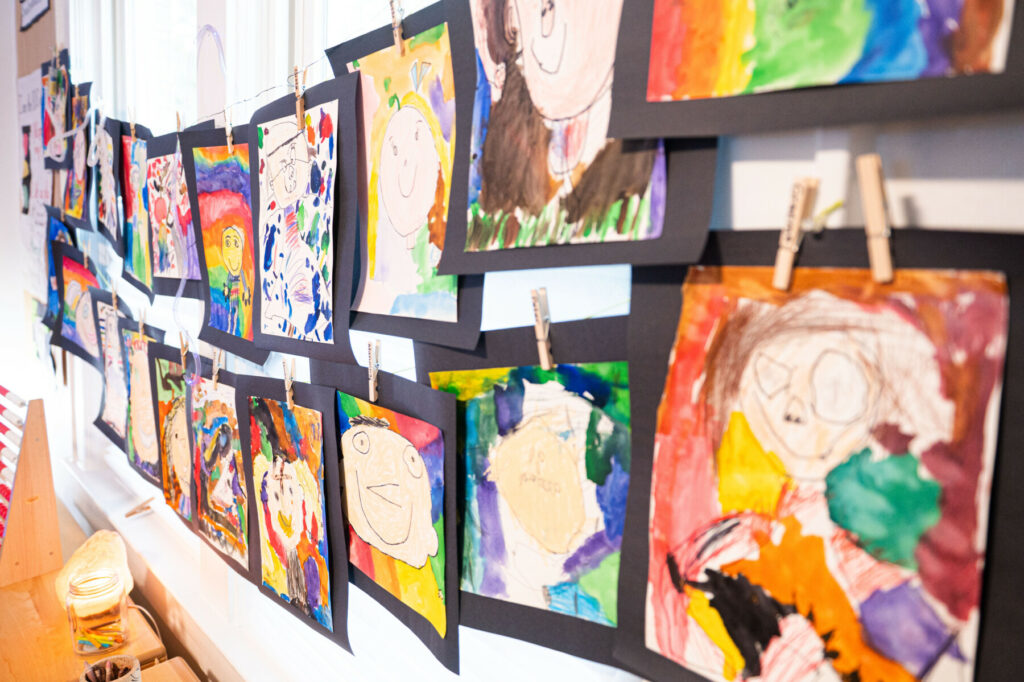
Kindergarten artists learn the procedures of the art studio and receive an introduction to materials and processes through the lens of the elements and principles of art, laying a foundation for ongoing learning. Students explore media such as paint, clay, collage work, drawing, and construction. Visual art at the Kindergarten level is exploratory and play-based, encouraging students to test the boundaries of processes and materials while learning about various artists. Kindergarten students make paper mache pumpkins inspired by Yayoi Kusama during their unit on pumpkins.
In Kindergarten PE class, students will develop the physical self through individual and group activities, focusing on basic movements, learning through games, and encouraging an active lifestyle. Some popular activities include obstacle courses, simple team sports, and movement games like fire and ice tag. We’ll also practice some basic stretching exercises, balance, and coordination. The class starts with a warm-up game and concludes with a cool-down activity. Students will learn about the importance of physical activity and develop a connection to an active lifestyle.
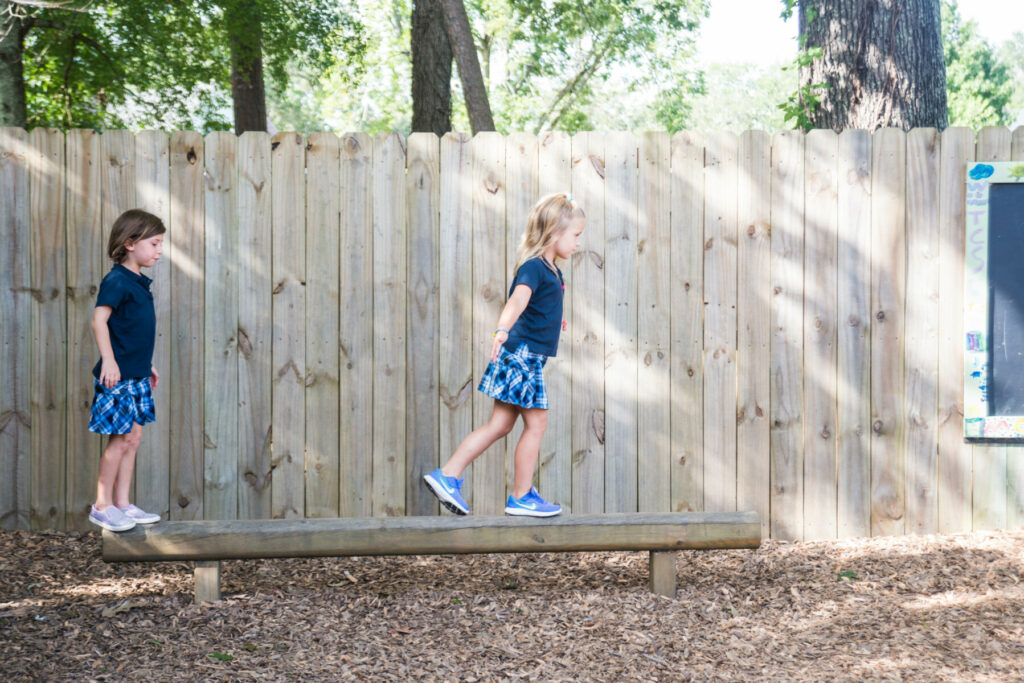
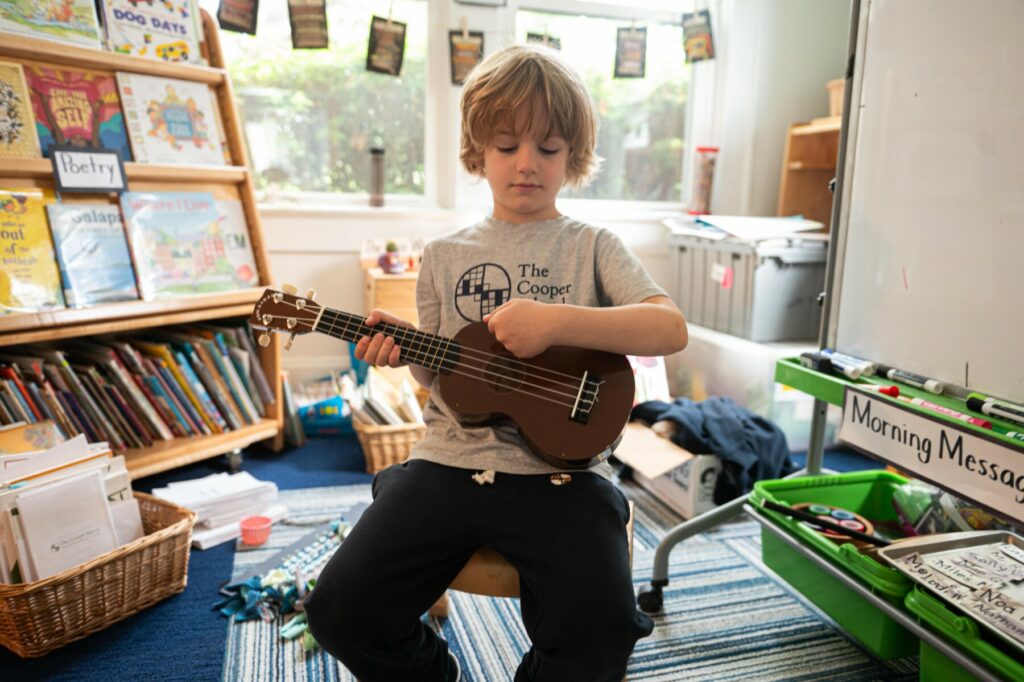
In the Kindergarten music class, students develop their social skills through cooperation, individual expression, and exploration. Students sing together, dance together, and try new instruments. The main activity of learning is through play. Popular activities include rhyming songs, rhythm exercises, freeze dance, sharing instruments, making shapes together in small groups, and singing songs. Students may make sounds with the drum, mandolin, violin, guitar, ukulele, etc. The class begins with an opening song and ends with a short puppet show.
Play is incorporated into yoga sessions and students explore how to mindfully handle all of life’s little lessons. Toward the end of the school year the students create a yoga sequence together that we will also practice throughout the rest of our time together. The class is 45 minutes and will incorporate breathwork, yoga poses, rest and meditation.
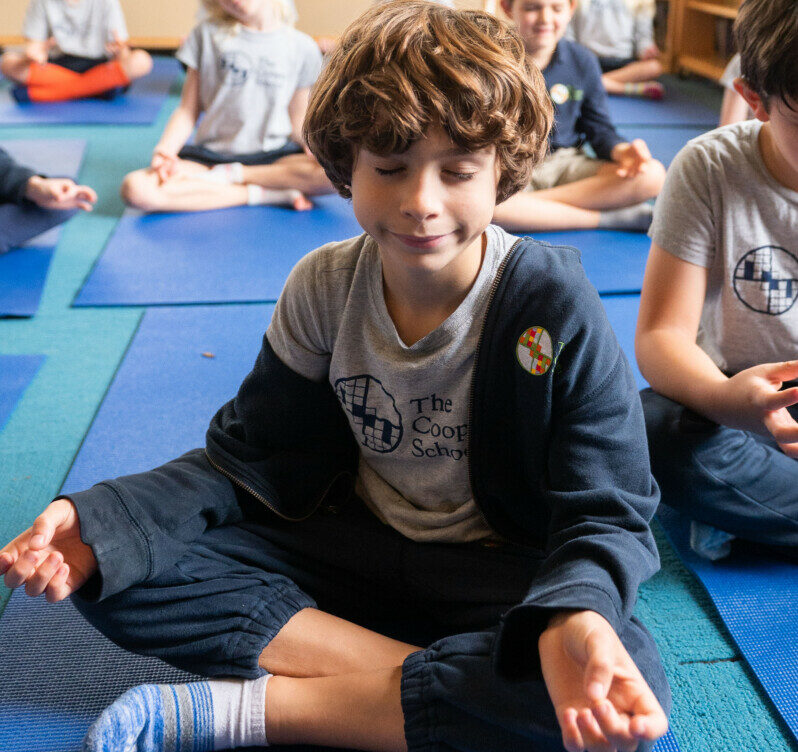
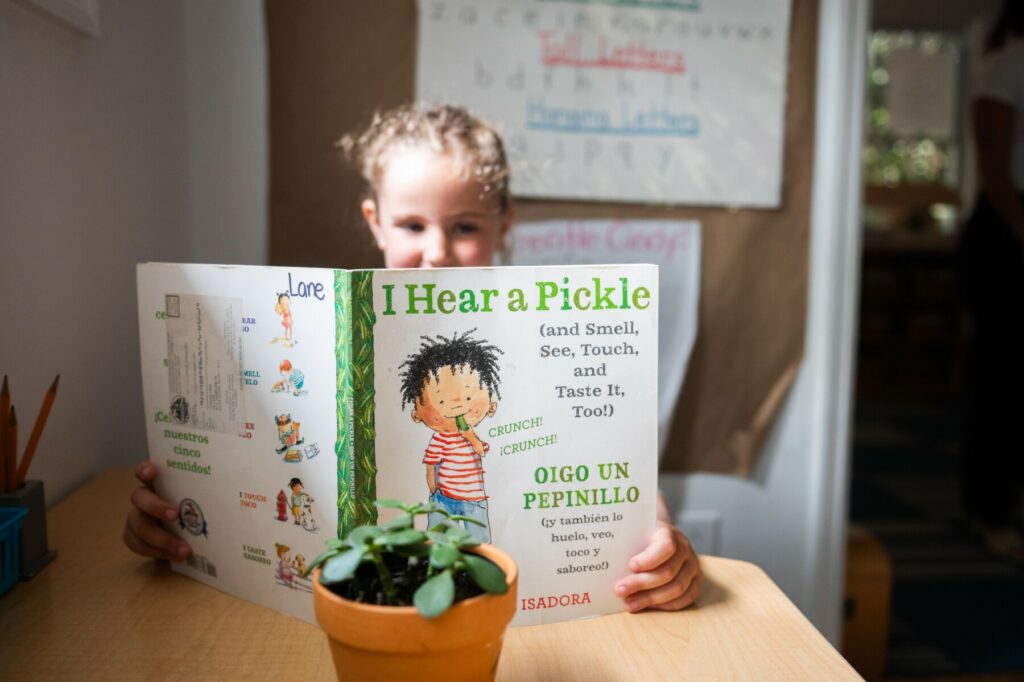
Students are encouraged to explore the Spanish language and culture through literature, music, and art. In these early grades, the priority is language acquisition and exposure. Throughout the year, students will rely on total physical response and the natural approach to begin recognizing and understanding the sounds and nuances of the Spanish language. Students acquire language through comprehensible input in Spanish through gestures, illustration, everyday objects, and artwork. We avoid translation as students will learn a second language using methods similar to the way they acquired their first. We read stories, role play scenarios, listen and dance to music, and create projects. Students take pride in their work and, overall, their acquisition of Spanish. Generally, these skills take about 2-3 years to fully develop.